Inflation typically has a negative connotation associated with it, however, this does not mean doom and gloom for the Entrepreneur or small business. There are opportunities to increase margin and cash holdings.
Begin with the end in mind.
– Stephen Covey
Inventory: One way for businesses to combat inflation is by increasing their inventory holdings. The main objective is multifaceted (i) It is important to ensure that businesses have the necessary supplies and products on hand in order to meet customer demand and maintain a steady stream of revenue. (ii) to minimize any potential losses due to fluctuating prices, based on historical contracted sales commitments (iii) Increasing current sales prices, based on the new procurement prices, this will give you additional margin based on inventory on hand, (iv) Increase stock holdings on items which are expected to become more expensive or short supply in the future, such as raw materials or components used in production processes.
Accounts Receivable: Another option is for businesses to increase their collections activity, through accounts receivable and by ways of either implementing a COD options (for example 1,5% for payment on date of service) or early settlement discounts (for example 1% for payment within 7 days). By closely monitoring customer payments, companies can ensure that both current and overdue invoices are paid in full before the value of the invoice decreases due to inflationary pressures. Eliminate credit card acceptance and if this is not a feasible option, consider implementing a service fee to recoup the processing fee.
Reinvesting the proceeds back into inventory is a prudent strategical approach.
Accounts Payable: Companies should also look closely at how their payment terms are set up with their suppliers and make sure they are taking advantage of any discounts offered for early payments, as this could help offset some of the costs associated with inflated prices. Non-discounted offerings should be paid on the due date and if at all possible, renegotiate longer terms. Utilizing credit cards as a form of payment to obtain an additional 30 days of interest-free money. I would causation about incurring additional costs by funding the processing fee – this is counterproductive.
Cash Reserves: Keep sufficient cash on hand, to meet all your obligations. Utilizing Line of Credit facilities is an acceptable option to consider.
Measure and monitor your endeavors with the following KPIs. These three will hold you in good stead:
Inventory Turnover Ratio – In accounting, inventory turnover is a measure of the number of times inventory is sold or used in a time period such as a year. It is calculated to see if a business has an excessive inventory in comparison to its sales level.
A debtor collection period is the amount of time it takes to collect all trade debts. The smaller the amount of time it takes to collect these debts, the more efficient a company will seem to be. A longer period indicates problematic trade debtors or less overall efficiency.
Creditor Days show the average number of days your business takes to pay suppliers. It is in essence the inverse of the debtors’ collection period.
Each and every industry has its own unique nuances, and the above ideas are true for most industries. Should you wish to discuss alternative strategies, please do reach out. I would be honored to assist you.

